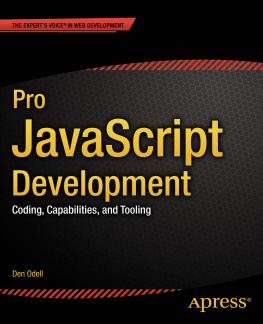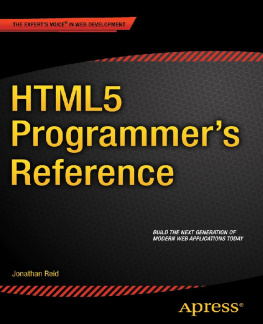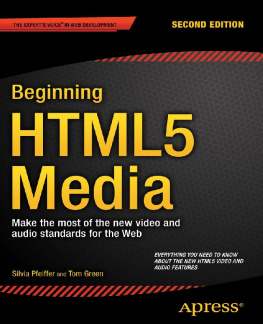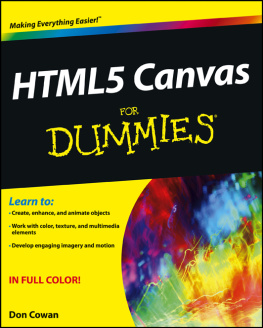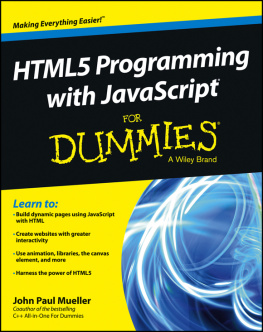1. Introduction
In this book, we will go on a journey down the rabbit hole of HTML5 and modern JavaScript, exploring a lot of different subjects as we go. We will start with canvas, which many of you will already be familiar with, and use it for two examples: a flocking animation and a coloring book app. Each chapter shows you how each topic can be used in the real world; how HTML5 and JavaScript can be used together to create useful applications and not just for making games or cool demos (although it will also help with those too). The book is split into three main projects, with some additional examples along the way. Every example (especially the main projects) aims to be a good starting point from which to play around and explore, because as useful as books are with their structured approach to learning, there is nothing better than just diving into the code yourself.
After canvas we will, in but the main example is a 3D node graph that shows relationships between films and actors/actresses. I chose this example because data visualization is an extremely useful technique and one of the areas that I have a strong interest in, it is also a good way to show what these new technologies have allowed us to do natively on the web.
In is one of the reasons why this book is called JavaScript Creativity ; it is not about design or even focused on what you can do with canvasit is about the creativity of applying web technologies to more than just a blog or an online store.
The music player project is put together in . I use Backbone as a way to bind together all the data, although you are welcome to convert it and instead use something else such as Ember or even just ES6.
The next project is comprised of will be a fairly in-depth look into how WebRTC works and how to use it. This will be a useful chapter for many because video chat is a common project that people want to make, especially within some businesses. The project also provides the introduction to getUserMedia that will be needed for the final project (Chapters 9 and 10) involving motion and object detection using the webcam.
Object detection is not a field that is particularly common within the web industry, but it has always been an interest of mine and we now have native capabilities for accessing the webcam (and even more complex techniques such as Web Workers, although I will not be using them in this book) so it makes sense that I would be doing computer vision on the web! The final project, involving object detection, is possibly less useful than the others but more interesting and hopefully it will be the perfect starting place for anybody interested in the subject as well as showing how powerful the web platform really is. The majority of computer vision algorithms are math based and confusing, so Ive gone for nave algorithms (simple to understand but have many edge cases that are not catered for), as well as using a library for more advanced object detection so that you can have an introduction without being bombarded with academia.
The final project ties together all the chapters. It is a real time multi-user, computer-generated, gesture-controlled musical band. This is an ambitious project and is by no means perfect. It is a great way to practice everything in the book and is (I hope) a fun and unique project. The music generated will not be great, it will probably lag and not sound very good but I think it will be the perfect end to the book; after all, my main purpose of the book is to get you involved with projects that you may have not even thought about before!
What You Need to Know
Now that you know the journey we will be going on with this book, it is important to be able to start it. The book is being sold as requiring a working knowledge of JavaScript. This is quite true, but it is written in such a way that, although some of the code is quite complicated, it should be fairly accessible to anybody with some programming background.
Note
This chapter will focus on the basics, namely debugging, so most of you will probably want to continue to for the introduction to canvas.
CSS
I just wanted to say that knowledge of CSS is expected, but not particularly needed. I use CSS in some chapters to style parts of a page but I tend to focus on the code throughout the book so nothing is polished design-wise and CSS use is minimal. You can get by fine without knowing any, but just be aware that if I do use some it will not be explained.
Debugging
Debugging is, at least in my opinion, a programmers best skill because quite often code will not work as expected (especially across browsers) and even if it does it can always be improved. Most of the code in this book relies on cutting-edge technologies and many specs have changed even while I wrote the bookso if anything doesnt work, then it could be due to the implementation having changed since I wrote it or the browser you are using doesnt support it.
Browser Compatibility
The first thing to check is whether your browser is compatible with the features being used. This is something you should already be familiar with if youve ever used any modern technologies in production because many users still use browsers that do not support it. Of course, in this case you should be writing code in a progressive enhancement way so that the modern browsers get the modern features but it does not break the older browsers. However, throughout this book (because it is about cutting-edge technologies and features) I do not support older browsers and quite often at the time of writing the code only works in one or two browsers. Unless otherwise stated, I test all the code using Google Chrome 31. Most of it should also work in Mozilla Firefox.
The browsers change rapidly these days, in fact while I was writing the book Chrome forked Webkit into Blink and it has already affected specifications because they no longer always agree to go the same route. So what we need is a way to know when different versions of browsers change the implementation. Unfortunately, apart from looking through the change logs or bug tracker, there is no way to know if something has been changed. Luckily, we do know when features are added (which is enough for the majority of cases) due to two open source projects: www.html5please.com and www.caniuse.com . HTML5 Please is used to easily know if using a feature in production is recommended, and Can I Use is used to know in which browsers a feature is supported.
JavaScript Console
Every browser has different developer tools, some are similar and some quite different but one similarity that all browsers have is the JavaScript Console. This is where all errors are logged, but it is often much more powerful than just an error log. I discuss it from a Google Chrome viewpoint, but most browsers have very similar commands.
Access to variables
Often you will want to know a variables value so that you can verify it is what you would expect or even just to learn how the data is structured (especially for objects). To do this, simply type the name of the variable into the JavaScript console and the value will be output below the name, this works for all types including objects and arrays. There are a few ways to access the variables via the console:

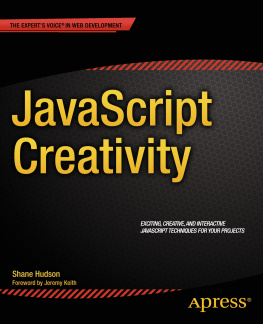

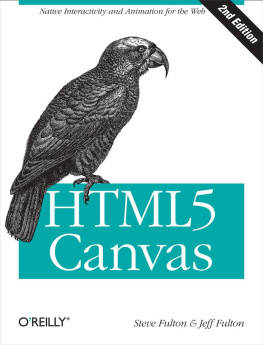


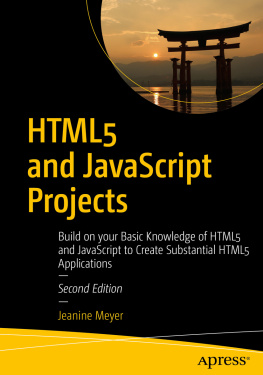

![Jeanine Meyer [Jeanine Meyer] - HTML5 and JavaScript Projects: Build on your Basic Knowledge of HTML5 and JavaScript to Create Substantial HTML5 Applications](/uploads/posts/book/120565/thumbs/jeanine-meyer-jeanine-meyer-html5-and.jpg)
